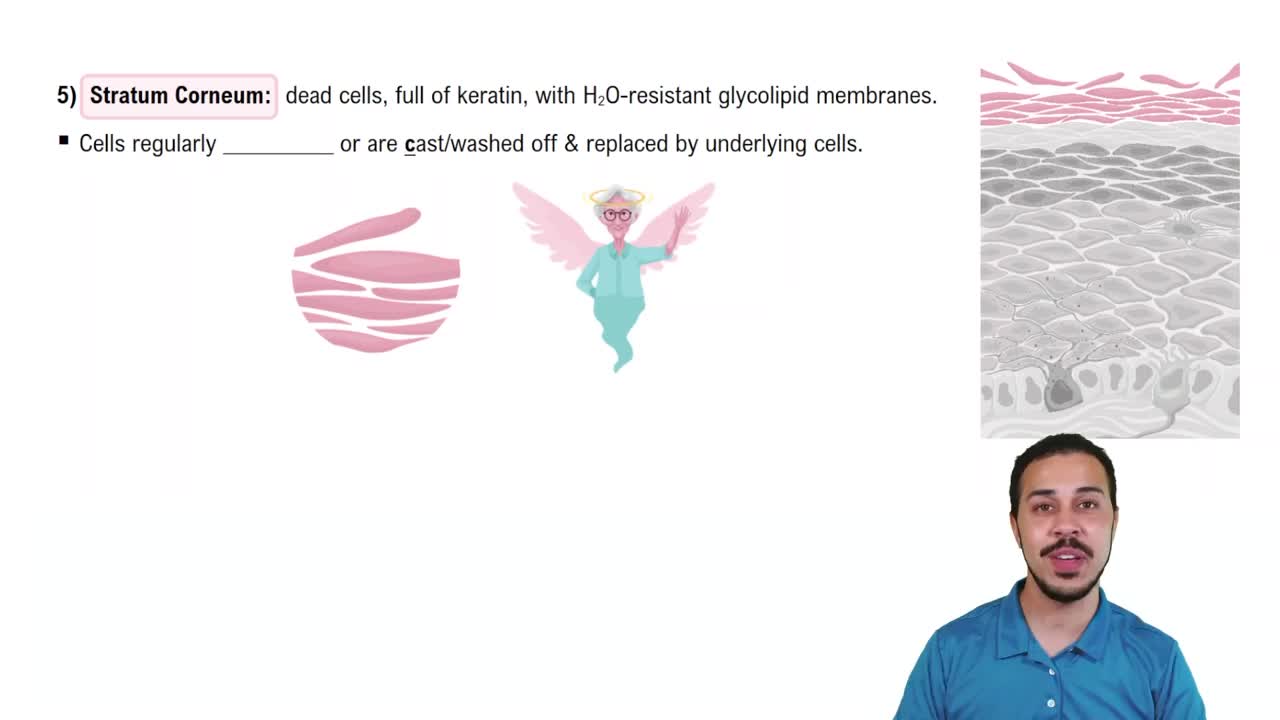Which of the following epithelia most easily permits diffusion?
(a) Stratified squamous
(b) Simple squamous
(c) Transitional
(d) Simple columnar
 Verified step by step guidance
Verified step by step guidance Verified video answer for a similar problem:
Verified video answer for a similar problem:



 0:48m
0:48mMaster 5 Characteristics of Epithelia with a bite sized video explanation from Bruce Bryan
Start learning